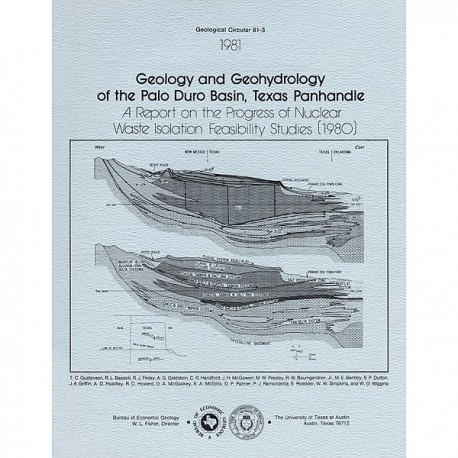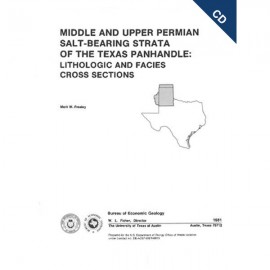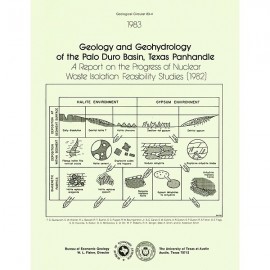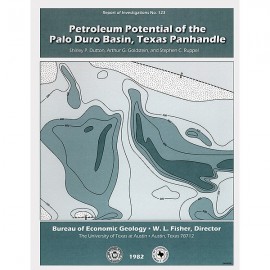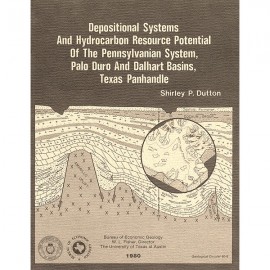Geological Circulars
-
Books & Reports
- Reports of Investigations
- Guidebooks
- Udden Series
- Geological Circulars
- Down To Earth
- Atlases of Major Oil and Gas Reservoirs
- Texas Memorial Museum Publications
- Environmental Geologic Atlas of the Texas Coastal Zone
- Mineral Resource Circulars
- Other Reports
- Seminars and Workshops
- Handbooks
- Submerged Lands of Texas
- Symposia
- Annual Reports
- Open File Reports
-
Maps & Cross Sections
- Thematic Maps
- Miscellaneous Maps, Charts & Sections
- Geologic Atlas of Texas
- STATEMAP Project Maps
- Geologic Quadrangle Maps
- Cross Sections
- Highway Geology Map
- Energy and Mineral Resource Maps
- Shoreline Change and Other Posters
- Wilcox Group, East Texas, Geological / Hydrological Folios
- Bouguer Gravity Atlas of Texas
- River Basin Regional Studies
- Featured Maps
- Posters
- Teachers & the Public
-
Geological Society Publications
- Gulf Coast Association of Geological Societies
- Alabama Geological Society
- Austin Geological Society
- Corpus Christi Geological Society
- Houston Geological Society
- Lafayette Geological Society
- Mississippi Geological Society
- New Orleans Geological Society
- South Texas Geological Society
- GCS SEPM Publications
- Historic BEG & UT Series
Geology and Geohydrology of the Palo Duro Basin, Texas Panhandle...(1980)
GC8103
A free, digital version of this publication can be found on: Texas ScholarWorks
GC8103. Geology and Geohydrology of the Palo Duro Basin, Texas Panhandle A Report on the Progress of Nuclear Waste Isolation Feasibility Studies (1980), by T. C. Gustavson, R. L. Bassett, R. J. Finley, A. G. Goldstein, C. R. Handford, J. H. McGowen, M. W. Presley, R. W. Baumgardner, Jr., M. E. Bentley, S. P. Dutton, J. A. Griffin, A. D. Hoadley, R. C. Howard, D. A. McGookey, K. A. McGillis, D. P. Palmer, P. J. Ramondetta, E. Roedder, W. W. Simpkins, and W. D. Wiggins. 173 p., 92 figs., 11 tables, 1 plate, 1981. ISSN: 0082-3309. Print.
To purchase this publication as a PDF download, please order GC8103D.
ABSTRACT
Integrated study of the basin structure, tectonic history, physical stratigraphy, hydrogeology, geochemistry, geomorphology, natural resources, and rock physics of the Palo Duro and Dalhart Basins in the Texas Panhandle is part of a national evaluation of ancient salt basins as potential sites for isolation and management of nuclear wastes.
Since early 1973, the Bureau of Economic Geology has been evaluating several salt-bearing basins within the State of Texas as part of the national nuclear repository program. The Bureau, a research unit of The University of Texas and the State of Texas, is conducting a long-term program to gather and interpret all geologic and hydrologic information necessary for description, delineation, and evaluation of salt-bearing and related strata in the Palo Duro and Dalhart Basins of the Texas Panhandle.
The program in FY80 was divided into five broad research tasks, which were addressed by a surficial analysis and shallow stratigraphy group, a hydrology and geochemistry group, a basin analysis group, a host-rock analysis group, and a seisrnicity and tectonic environment group. The surficial analysis and shallow stratigraphy group has collected remotely sensed, surface and subsurface data to describe land resources, surface processes, and rates and styles of geomorphic development. The hydrology and geochemistry group has continued analysis and shallow and deep fluid circulation within the basins and has initiated studies of rock and fluid geochemistry within the salt-bearing units. The basin analysis group has characterized the major salt-bearing stratigraphic units within the basins and has assessed the potential for generating and trapping hydrocarbons within the basins. Concurrently, the host-rock analysis group has continued a study of cores from two drilling sites for analysis of salt and other lithologic units within the cores. The newly formed seismicity and tectonic environment group has initiated studies of deep-basement structure and tectonic development of the basin and has made an analysis of surface fracture systems.
This paper, a summary of progress during FY80, presents principal conclusions and reviews methods used and types of data and maps generated. Topical reports, discussing various geological aspects of the Palo Duro and Dalhart Basins in detail, are being published as phases of the study are completed. This research was supported by the Department of Energy and its predecessor, the Energy Research and Development Administration, under contracts numbered EY-77-S-05-5466 (FY78), DE-AC97-79ET446 14 (FY79), and DE-AC97-ET46615 (FY80).
Keywords: Dalhart Basin, fracture systems, geohydrology, Palo Duro Basin, tectonics, Texas, waste isolation
Citation
Gustavson, T. C., and others, 1981, Geology and Geohydrology of the Palo Duro Basin, Texas Panhandle A Report on the Progress of Nuclear Waste Isolation Feasibility Studies (1980): The University of Texas at Austin, Bureau of Economic Geology, Geological Circular 81-3, 173 p. doi: doi.org/10.23867/gc8103.
